As is known to all, who are already faced with laying tile, it is impossible without the use of crosses or floor leveling systems. In this case, refers to attachments, which help to create a seam floor tiles.
What are the crosses and why they are needed?
Mostly used, of course, tile crosses, as it is more cost-effective way, especially for self-stacking, not professional.
Sami crosses are small plastic devices, which help to carry out qualitatively as the creative process - tile laying.
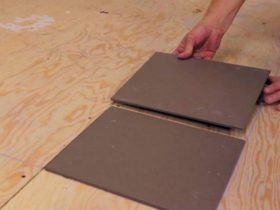
Yes, this process is really creative, since it involves the conversion of the gray concrete floor (not necessarily concrete, it can also be a wooden or already be covered with tiles, o tom, how to lay tile on the tile, see the separate article), almost a work of art. And to create a seam floor tiles helps make the surface really brilliant (and it's not about her splendor, and the beauty). It is thanks to them that the tile colors shimmer successfully, complementing the surrounding atmosphere.
Basic requirements for the tile seams
In the matter of a seam between tiles need to do will help you understand, Firstly, its purpose. And it should be noted, that the seams themselves perform a number of functions, respectively, to them are put forward certain demands. among these:
- In the first place all the seams must be the same. Besides, match exactly, not sbiralsya at crossroads (junction of four tiles for laying standard manner in a joint).
- Besides, they should all be parallel, regardless of the method of laying.
- And a very important factor is the selection of the size of the joint, as it affects the appearance of the finished surface.
These are the minimum rules, that must be followed in order, to ultimately be disappointed in poor quality coatings. It is to help in this difficult at first glance, tasks and required crosses.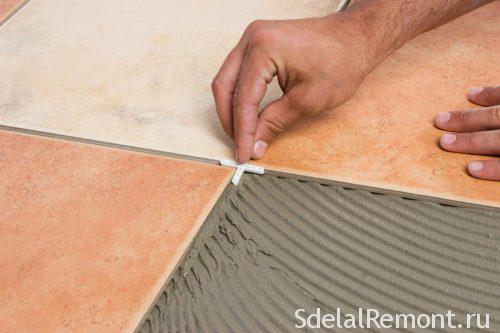
Through their use will make perfect joints. Applying them correctly, you get exactly laid tile, and in addition, the same seams size, parallel to each other (which in fact it is a basic requirement).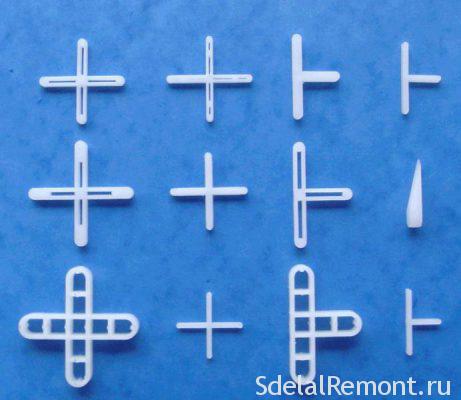
The correct choice of the size of the joints
In most cases, the answer to the question what the seam between tiles is required, becomes - thinner, all the better. Quite often this is the case and there, as thin seams give the coating of elegance and make it more beautiful. But do not forget, the need to focus also on the size of the tiles.
Depending on, where the tile is laid, it applies a different size, accordingly allowed and the different dimensions of the seams. In this way, if we are talking about, a joint tile on the wall, here are the following options:
- For the small size of the tiles fit seams 1 millimeters.
- For the average size of the material can take the crosses 1,5 mm
- At the same time, for the larger elements selected thickness 2 mm.
Making the seam between the tiles on the wall of a 2 mm is not recommended. Even with the size of tile 60 centimeters, he will not look, and simply spoil the appearance of the premises.
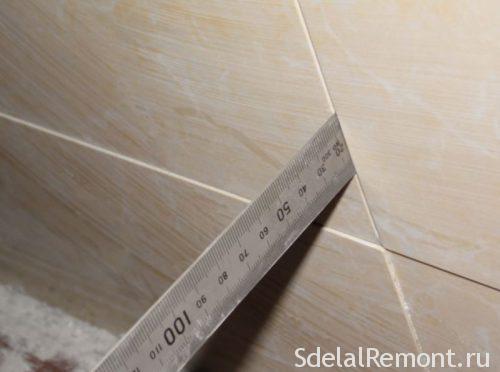
But in the case of the floor covering, It is already possible to look at the bigger size. In this case, the following dimensions apply:
- Tile dimensions up 15 cm seam 2 mm.
- For the elements of the 15 to 25 cm optimum size becomes 2.5 mm.
- At the same time the dimensions of the material from above 25 cm, a good choice would be 3mm.
Also crosses are used in some cases up to 5 millimeters. But to do so is only recommended when working with granite or other large tiles in public buildings.
but note, that even in this case,, when it comes to laying tiles, even the size of 60*40 centimeters, experts do not extend to the point where the seams. In this way, for floor tile joints becomes the maximum size 3 mm.
If the "specialist", you hired to lay tile claims, the seam more 3 better millimeters, We recommend to find another, because such a decision is resorted to only amateurs, unable to lay exactly tiles around the perimeter of a normal seam.
This is because, that a wider seam less outputs stacking irregularities, while at small they immediately catch the eye.
To apply this method to hide defects can only be yourself, in the absence of experience with tiles. In this way, extending the distance between the material itself, you have successfully zamaskiruete discrepancy.
Features crosses
A little step back from the issue of any seams between the tiles is better, and return to our crosses. If you have lying around the house by accident a couple, take one in hand and examine it carefully.
maybe, at first glance, nothing special you will not see. But look again, Well, will not be long pull and uncover the mystery. Good looking more closely you will notice, that the cross itself, more precisely its part in thickness performed in a trapeze. ie. we can see, the upper plane is a little, lower than.
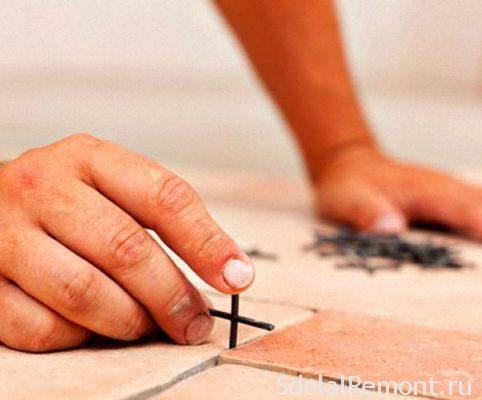
This is done in order, to make them easier to use. Besides, it can be seen and a bevel on the side faces, that allows you to immerse the cross between the tiles a little easier.
Besides, these bevels suggest a difference in the amount of tile, ie. she also has different tile sizes in the back and the front of the. more concretized, you can note, that the front portion of a fraction of a millimeter already, than the back, why and provide such slants in the crosshairs.
It is because, when using such devices, pay attention to the fact, what side you insert. In particular, for getting monotonous coverage is necessary to equip a narrow side inwards. Otherwise, if we ignore this, it will cover less than ideal.
How long will it crosses
Wondering what should be the seams between the tiles, important to immediately calculate the number of supplies to create seams themselves. And it's pretty easy to find.
Depending on, how you will insert crosses and will depend on the number. In this way, Equipping them at intersections, in the same plane with the tiles, they will need about the same, how and most tiles (desirable to take stock of several dozen).
But in that case,, If you plan to equip them perpendicular to the seam, the number will increase by four times, ie. on each tile will need at 4 cross (take better in four, as well it remains a small margin).
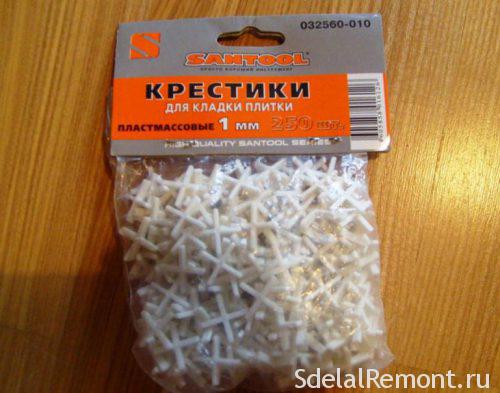
And note, that at least for the first case crosses themselves must be slightly less, but it is much more difficult to remove them. In this way, for, to prepare the tiles for the grout will need a special tool.
It called such - gaff. It is designed specifically to work with tiles and removal of crosses after laying. In this way, after their removal, and it will be held grouting.
conclusion
On this question of, It can be considered which should be closed joints between the tiles. Along with the, again he became interested in the distance between the tiles, it is planned to carry out its packing, therefore we recommend to get acquainted with our other items, in particular technology laying tile on the wall and on the floor, and choice of grouting and its implementation. Also on site you will find a lot of interesting and useful material.
P.S. As always, At the end of a few videos on the tile joints. We hope the information turned out to be the most useful for you. If there are any questions, We are waiting for them in the comments.












